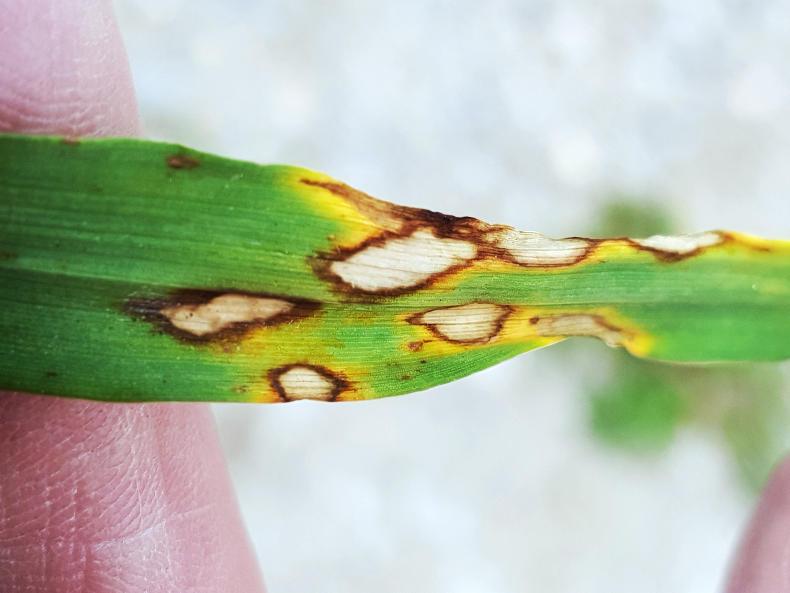Rain welcome
Depending on where you are, the recent rain might be described as welcome to very welcome. Rainfall amounts were variable but the prospect of wet and muggy weather for a week or so is not good news at this time of year.
Winter crops: Barley crops are now in grain fill and most oats are eared out and the final sprays should be applied. Wheat is the only crop now requiring fungicide and some T3 treatments have already been applied to early crops that are now flowering. The majority of wheat crops are now between late booting and earing out.
T3 fungicides look increasingly important with the return of this wet humid weather. This makes ear blight the predominant target, with chlorothalonil only needed where septoria is deemed to be a problem. The target timing is early to mid-flowering (when the expelled anthers on the lower one-third of the ear are still yellow) but this can be very difficult to judge in slow cold conditions. Waiting too long could allow infection in before spraying.
Final or T3 fungicides are mainly triazoles for ear blight. The main mixtures are Prosaro, Gleam or Magnello. Robust rates are essential to deliver ear blight reduction. Some may add a strobilurin and possibly a contact also.
Spring crops
Earlier-sown barley crops are at awns emerging and time for the final fungicide. Final fungicide options include Bontima, Siltra, Ceriax, Elatus Era, Treoris plus a triazole, Fandango or other mixtures. Include chlorothalonil or Phoenix in all treatments for ramularia control.
Spring wheat and oat crops are generally between flag leaf emerging and booting. Wheat should be sprayed once the flag leaf was emerged. This treatment could be products such as Elatus Era, Adexar, Ascra, Librax or a triazole plus Treoris mix. The flag leaf spray in oats could be a simple as straight epoxiconazole or tebuconazole or something more complex such asElatus Era, Cielex, Jenton, Lumen, Siltra, etc.
Grain stores
While not every grain store has been cleared yet, many have and these should be thoroughly cleaned and treated with insecticide well ahead of this year’s crops coming into store. Advice on how to do this can be found on page 48. Store hygiene remains a critical part of grain storage as pest infestation of any sort can result in crop losses.
A look back
Many of you will remember older winter wheat varieties such as Hobbit or even Maris Widgeon or Square Head Master. Even more may remember ones such as Maris Huntsman, Norman, Avalon, Cappelle Desprez, Consort, etc. Or spring barley varieties such as Nessa, Banba, Emma, Hunter, Cooper, Blenheim, Irena and even an Old Irish Barley landrace line. These old varieties will be on view at the ITLUS open day on 20 June to celebrate 50 years of the society. Anyone interested in attending should contact Eugene Ryan, ITLUS secretary (itlussec50@gmail.com), for details of this special commemoration of the past five decades in tillage production.









SHARING OPTIONS